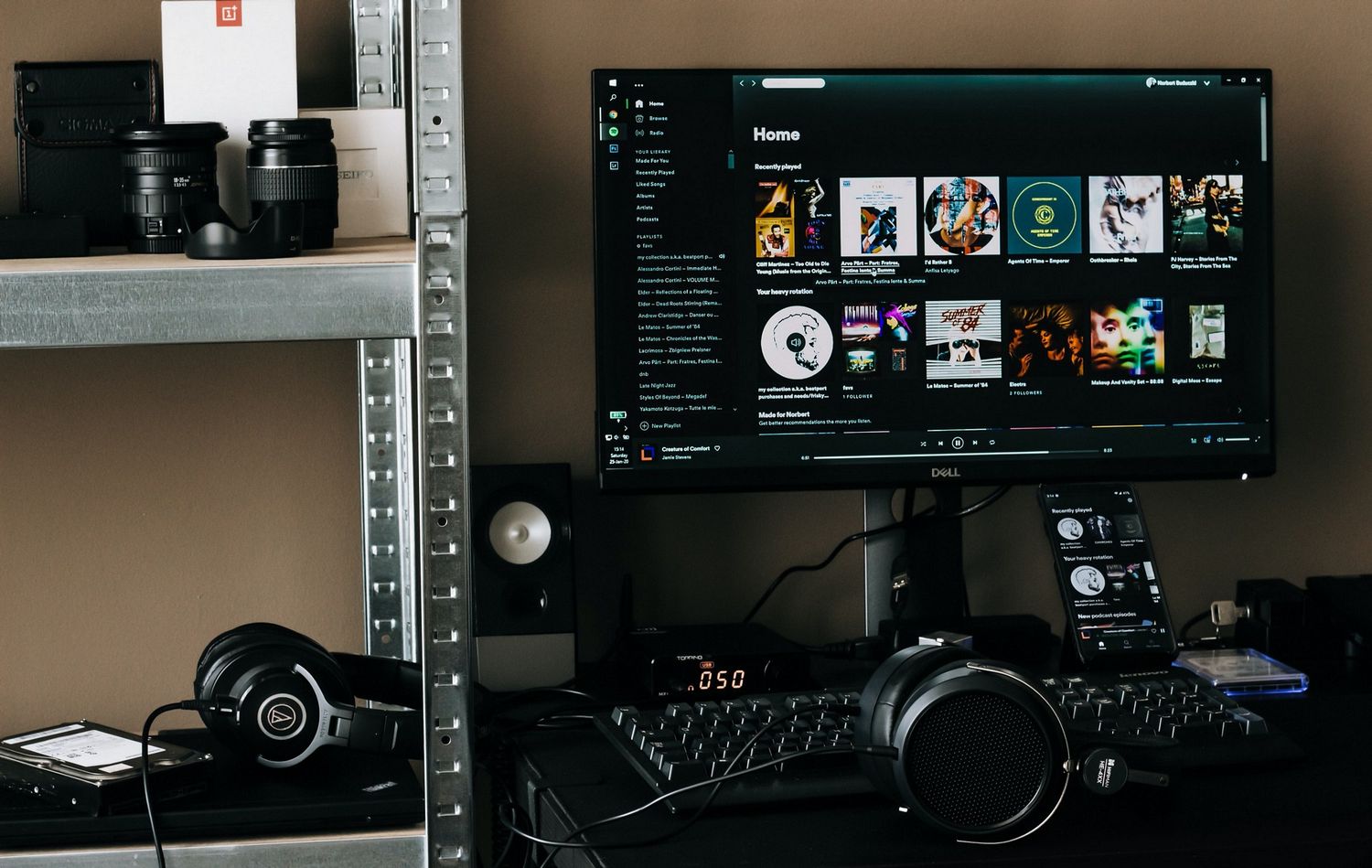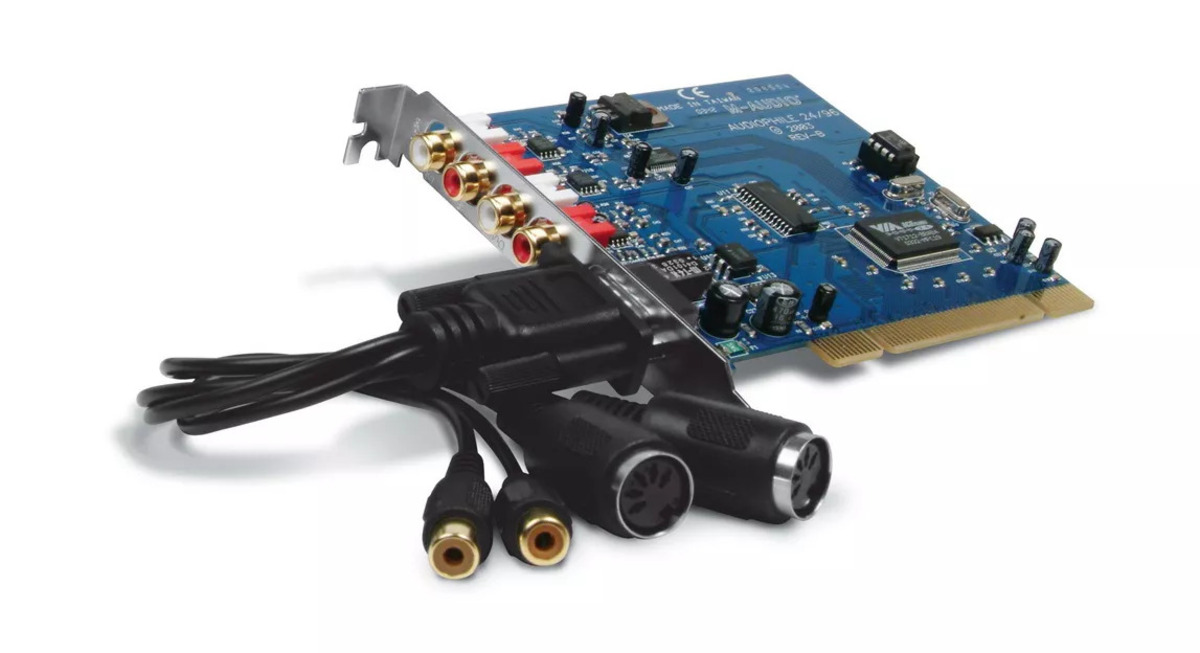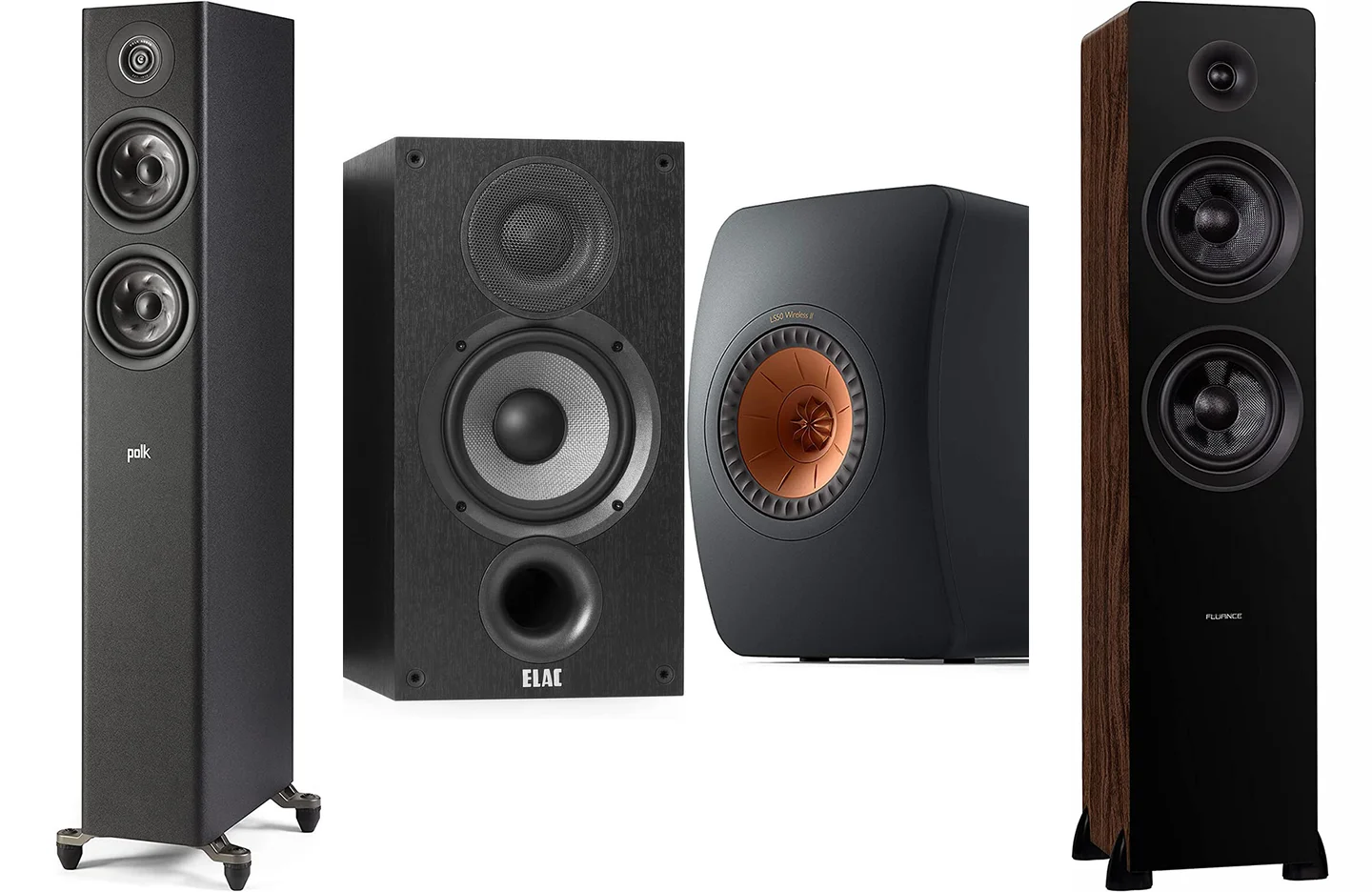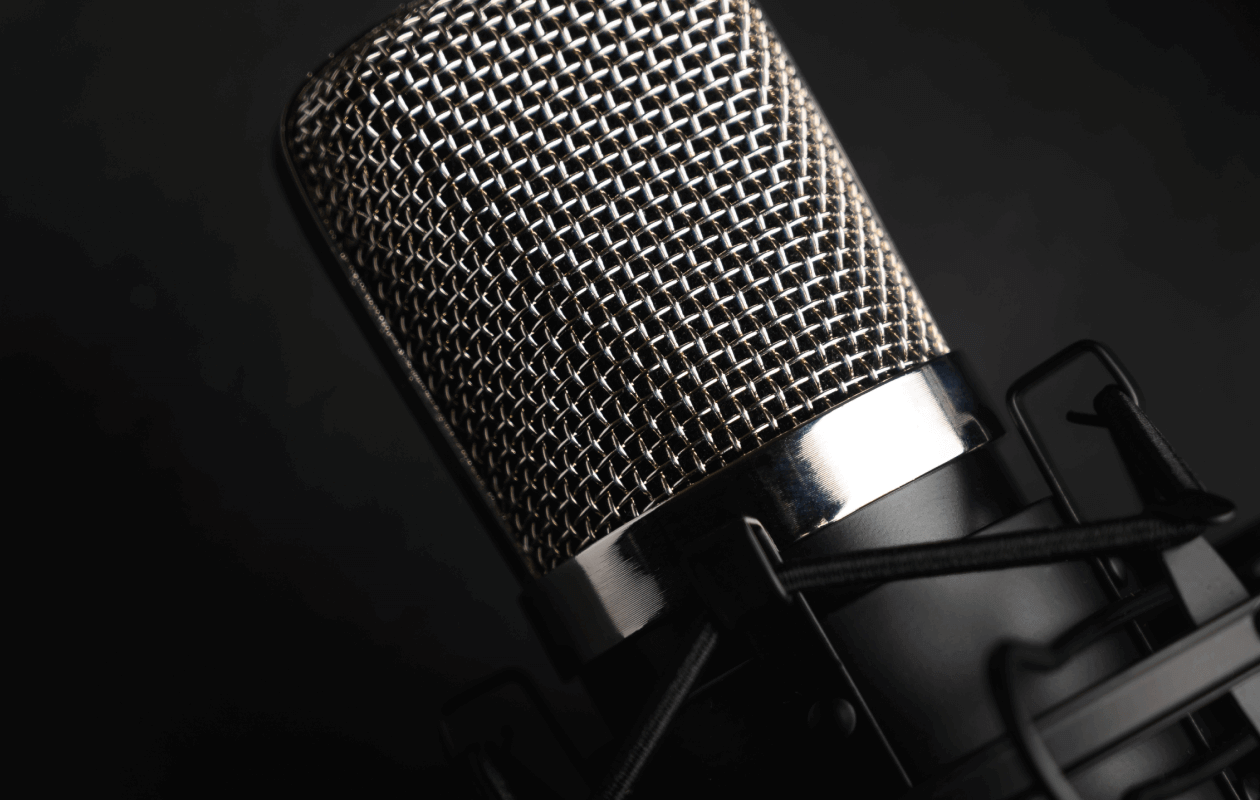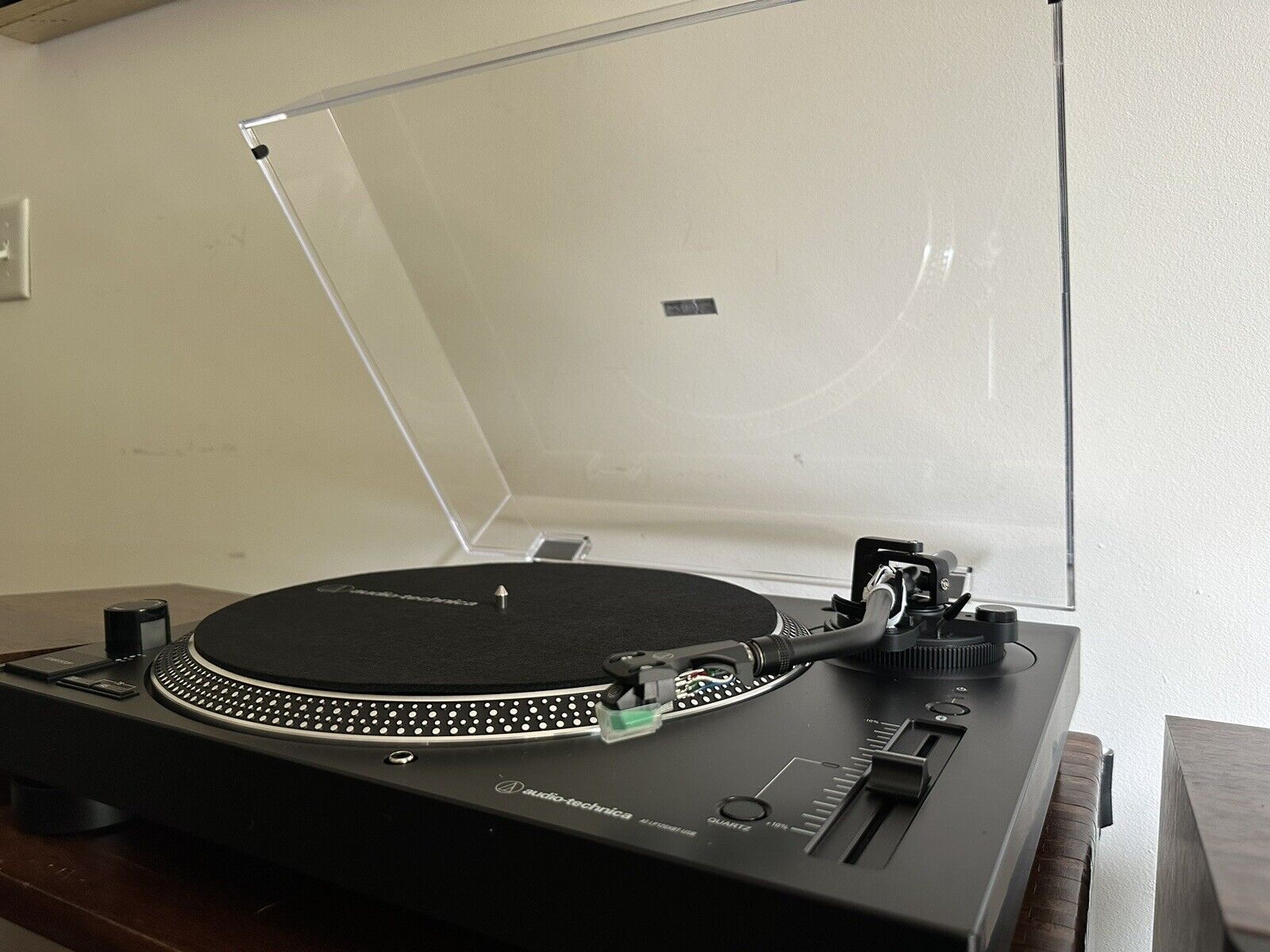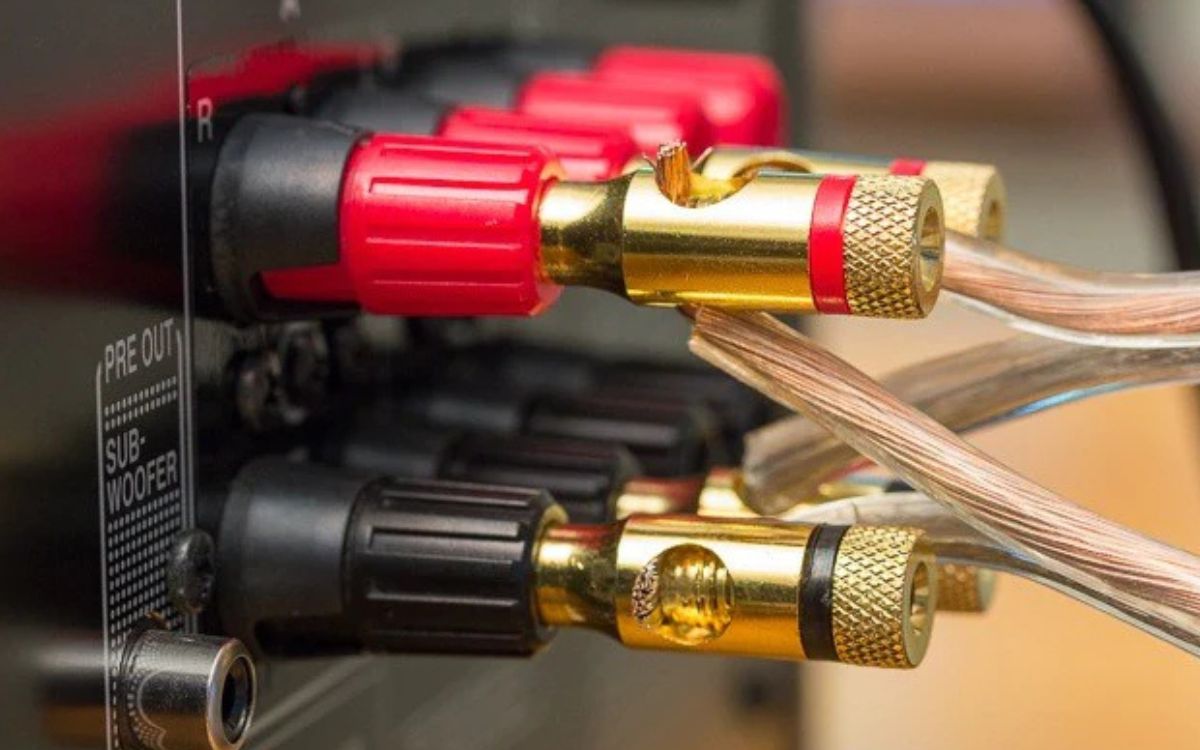Home>Production & Technology>Audiophile>How To Use Audiophile Speakers On PC Without A Reciever


Audiophile
How To Use Audiophile Speakers On PC Without A Reciever
Modified: February 18, 2024
Learn how to connect and use audiophile speakers on your PC without a receiver. Enhance your audio experience with these simple steps.
(Many of the links in this article redirect to a specific reviewed product. Your purchase of these products through affiliate links helps to generate commission for AudioLover.com, at no extra cost. Learn more)
Table of Contents
Introduction
Welcome to the world of audiophile speakers! If you’re a music lover or a dedicated audio enthusiast looking to elevate your listening experience, audiophile speakers are a must-have. These speakers are designed with meticulous attention to detail, using high-quality materials and advanced engineering techniques to deliver the utmost audio fidelity.
While audiophile speakers are commonly used in high-end home theater setups or dedicated stereo systems, you might be wondering if it’s possible to enjoy their superior sound quality on your PC without the need for a receiver. The answer is yes! In this article, we will guide you through the process of connecting and using audiophile speakers on your PC, providing you with the ultimate audio experience at your desk.
Before we dive into the specifics, let’s briefly touch on what makes audiophile speakers so special. These speakers are distinguished by their ability to reproduce sound with incredible accuracy, capturing every nuance and detail of your favorite music or audio recordings. From the finest instrument timbres to the subtlest vocal inflections, audiophile speakers bring a level of precision and realism that can transport you directly to the recording studio or live concert hall.
Now, let’s move on to the exciting part – connecting your audiophile speakers to your PC. Don’t worry if you’re not a tech expert; we’re here to break it down for you step by step. Are you ready to unlock the full potential of your audio setup? Let’s get started!
Understanding Audiophile Speakers
Before we delve into the process of connecting audiophile speakers to your PC, it’s essential to have a solid understanding of these remarkable audio devices. Audiophile speakers are meticulously crafted to deliver the highest level of sound quality and accuracy possible, ensuring an immersive listening experience. Let’s explore some key aspects that set audiophile speakers apart from traditional speakers.
Sound Reproduction: Audiophile speakers are designed to reproduce sound with exceptional fidelity. They utilize premium components, such as high-quality drivers, advanced crossover networks, and rigid cabinet constructions, to achieve accurate sound reproduction across the entire frequency spectrum. This results in precise imaging, detailed instrument separation, and a dynamic soundstage that brings your music to life.
Build Quality: Audiophile speakers are built to last. Manufacturers pay great attention to the materials and build quality of each component. From the speaker cones and enclosures to the binding posts and internal wiring, every detail is meticulously chosen to minimize resonances and distortions, allowing the speakers to faithfully reproduce audio signals without coloration or added artifacts.
Speaker Placement: Proper speaker placement plays a vital role in maximizing the performance of your audiophile speakers. The ideal placement depends on factors such as room size, speaker type, and listening position. Correctly positioning the speakers can help create a balanced soundstage, improve imaging, and reduce unwanted reflections or vibrations.
Amplification: Audiophile speakers often require external amplification to achieve their full potential. While some speakers are designed to work with integrated amplifiers or receivers, others may require separate power amplifiers to efficiently drive the drivers and produce optimal sound quality. The right amplification ensures that the speakers can accurately reproduce the audio signals without distortion or strain.
Sound Signature: Different audiophile speakers have their own unique sound signatures. Some speakers prioritize neutrality and accuracy, aiming to reproduce audio exactly as it was recorded. Others may have a warmer or more colored sound, which can add a pleasing character to certain types of music. Understanding the sound signature of your speakers can help you tailor your listening experience to your personal preferences.
Now that we have a solid foundation in understanding what sets audiophile speakers apart, let’s move on to the practical aspect of connecting these speakers to your PC.
Connecting Audiophile Speakers to PC
Connecting audiophile speakers to your PC is a fairly straightforward process, and it allows you to enjoy high-quality audio directly from your computer. Here’s a step-by-step guide on how to make the connection:
- Check the Output Ports: Most PCs have a variety of output ports, including 3.5mm headphone jacks, USB ports, and sometimes even optical or coaxial digital outputs. Take a look at the available ports on your PC to determine which one is best suited for connecting your audiophile speakers.
- Select the Correct Cable: Depending on the output ports on your PC and input ports on your speakers, you may need to use a specific type of cable. For example, if your PC has a 3.5mm headphone jack and your speakers have RCA inputs, you’ll need a 3.5mm to RCA cable. If your PC has a USB port and your speakers support USB audio, you can use a USB cable to establish the connection. Refer to the user manuals of your PC and speakers to determine the appropriate cable.
- Make the Physical Connection: Once you have the correct cable, connect one end to the output port on your PC and the other end to the corresponding input port on your audiophile speakers. Ensure that the connections are secure and tight to avoid any signal loss or interference.
- Power on the Speakers: If your audiophile speakers have a power source, such as an AC adapter or power cord, make sure to connect them to a power outlet. Power on the speakers using the designated power button or switch.
- Check the Audio Settings: Open the audio settings on your PC and navigate to the playback devices section. Here, you should see the name of your audiophile speakers listed as an available output device. Select your speakers as the default playback device to ensure that the audio is routed through them.
- Test the Connection: Play a piece of audio, such as a song or video, on your PC to test the connection. If the audio is coming through your audiophile speakers, congratulations! You have successfully connected them to your PC. If the audio is still playing through your PC’s built-in speakers or headphones, double-check the physical connection and audio settings.
Once you’ve successfully connected your audiophile speakers to your PC, you can start enjoying the enhanced audio quality and immersive soundstage that they provide. However, to further optimize your listening experience, it’s essential to configure the audio settings on your PC properly. We’ll explore this in the next section.
Setting Up Audio Configuration
After connecting your audiophile speakers to your PC, it’s crucial to configure the audio settings to ensure optimal performance and audio quality. Follow these steps to set up your audio configuration:
- Access the Sound Control Panel: On your PC, go to the Control Panel or search for “Sound” in the Windows search bar to access the Sound settings.
- Select the Correct Playback Device: In the Sound settings, navigate to the Playback tab. Ensure that your audiophile speakers are selected as the default playback device. If they are not listed, try disconnecting and reconnecting the speakers or restarting your PC.
- Configure Audio Formats: Click on the playback device (your audiophile speakers) and click the “Properties” button. In the Properties window, go to the “Advanced” tab and select the highest audio quality available, such as 24-bit, 192kHz or the appropriate format supported by your speakers. This ensures that your PC sends the highest quality audio to your speakers.
- Disable Audio Enhancements: In the Properties window, go to the “Enhancements” tab and make sure to disable any audio enhancements or effects. These enhancements can alter the audio signal and interfere with the accurate reproduction provided by your audiophile speakers.
- Adjust Volume Levels: While still in the Properties window, go to the “Levels” tab and adjust the volume levels to your preference. Ensure that the volume is not set too high to avoid distortion or speaker damage.
- Configure Speaker Positioning: If your PC allows for speaker positioning configuration, such as stereo imaging or surround sound settings, customize them to match the arrangement of your audiophile speakers. This ensures that the audio is properly balanced and directed.
Once you’ve made these adjustments, your audio configuration should be set up to deliver optimal performance with your audiophile speakers. However, if you still notice any issues or inconsistencies with the sound, troubleshooting may be necessary.
In the next section, we’ll explore common issues that you may encounter when using audiophile speakers with your PC and provide troubleshooting tips to resolve them.
Adjusting Sound Settings
When using audiophile speakers with your PC, it’s essential to fine-tune the sound settings to achieve the best audio experience. With a few adjustments, you can further optimize the sound quality and tailor it to your preferences. Here are some key sound settings to consider:
- Equalizer Settings: Most PCs come with a built-in equalizer that allows you to adjust the frequency response of the audio. Experiment with different equalizer settings to enhance specific aspects of the sound, such as bass, treble, or midrange. Optimize the equalizer settings to achieve a balanced and pleasing sound signature that matches your listening preferences.
- Volume Control: Utilize the volume control on your PC to adjust the volume levels of your audiophile speakers. If you have a separate volume control on your speakers, use that as well to fine-tune the volume to your desired level. Remember to avoid setting the volume too high to prevent distortion or potential damage to your speakers.
- Audio Enhancements: Explore any audio enhancement features in your PC’s sound settings. Some features, such as virtual surround sound or audio enhancements like Dolby Atmos, can provide a more immersive listening experience. However, keep in mind that these enhancements may also alter the sound signature of your audiophile speakers, so use them judiciously to maintain audio accuracy.
- Playback Software Settings: If you are using third-party audio playback software, such as a media player or streaming service, check the settings within the software. Look for options to enable high-quality audio streaming or configure audio output formats. Adjusting these settings can optimize the audio playback quality and ensure compatibility with your audiophile speakers.
- Positioning and Acoustics: Pay attention to the positioning of your audiophile speakers and the acoustics of your listening environment. Experiment with speaker placement, angle, and distance to optimize the stereo imaging and soundstage. Consider acoustic treatments, such as diffusers or absorbers, to minimize unwanted reflections and echo in your listening space.
By adjusting these sound settings, you can fine-tune the audio output from your PC, enhancing the performance of your audiophile speakers and creating an immersive and enjoyable listening experience.
Now that we have explored the various sound settings, let’s move on to troubleshooting common issues that you may encounter when using audiophile speakers with your PC.
Enhancing Audio Quality
If you’re a true audiophile, you’re likely always seeking ways to enhance the audio quality of your system. While audiophile speakers already offer exceptional sound reproduction, there are additional steps you can take to further improve your listening experience. Here are some tips to enhance the audio quality of your audiophile speakers:
- Upgrade Your Audio Source: Consider upgrading your audio source to a high-quality digital-to-analog converter (DAC) or a dedicated sound card. These components can significantly improve the digital-to-analog conversion process, resulting in cleaner audio signals and enhanced sound reproduction.
- Optimize Your Music Files: Ensure that your music files are of high quality. Use lossless audio formats such as FLAC or WAV instead of compressed formats like MP3. Higher quality music files retain more detail and provide a more accurate representation of the original recording.
- Invest in Quality Cables: The cables connecting your PC to your audiophile speakers play a crucial role in maintaining signal integrity. Use high-quality cables with proper shielding to minimize distortion and interference. Consider investing in cables made with oxygen-free copper (OFC) or other high-grade materials.
- Room Acoustics: Assess the acoustics of your listening space and make necessary adjustments. Adding acoustic treatments, such as diffusers or absorbers, can help mitigate unwanted reflections and resonances, resulting in cleaner and more accurate sound reproduction.
- Speaker Positioning: Experiment with the positioning of your audiophile speakers. Proper speaker placement can significantly impact the soundstage and imaging. Follow guidelines for the ideal distance between speakers and your listening position, as well as the angle and height for optimal sound dispersion.
- Calibration and Room Correction Software: Consider using calibration software or room correction systems to further fine-tune the audio performance of your audiophile speakers. These software solutions analyze your room’s acoustic characteristics and apply adjustments to compensate for any audio anomalies, resulting in a more accurate and balanced sound.
Implementing these tips can help you unlock the full potential of your audiophile speakers and create a truly immersive and high-fidelity listening experience. Remember to experiment and trust your ears to find the settings and configurations that best suit your preferences and the capabilities of your audio system.
Now that we’ve covered various ways to enhance audio quality, let’s address some common issues you may encounter when using audiophile speakers with your PC and provide troubleshooting tips.
Troubleshooting Common Issues
While connecting and using audiophile speakers on your PC can be a rewarding experience, you may occasionally encounter some technical challenges. Here are common issues you might face and troubleshooting tips to help resolve them:
- No Sound: If you’re not hearing any sound from your audiophile speakers, first check the physical connections. Ensure that all cables are securely plugged in and that the speakers are powered on. Additionally, verify that the audio settings on your PC are correctly configured to output sound through the speakers.
- Low Volume or Distorted Sound: If the audio is too low or distorted, adjust the volume levels on your PC and on the speakers themselves. Make sure that the speaker volume is not set too high, which can cause distortion. If the issue persists, try adjusting the volume in the software or application you’re using to play audio.
- Interference or Noise: If you hear static, buzzing, or other unwanted noise, check for any sources of interference near the speakers or cables. Move any electronic devices or power cables away from the speakers to minimize interference. Additionally, ensure that all connections are secure and that cables are not damaged.
- Audio Lag or Sync Issues: If you notice a delay between audio and video, check the audio settings on your PC or in the media player you’re using. Look for settings related to audio synchronization or lip sync and adjust them accordingly. It’s also worth checking for any available firmware updates for your speakers or audio devices that might help resolve sync issues.
- Lack of Bass or Imbalanced Audio: If you find the bass to be lacking or the audio to be imbalanced, check the equalizer settings on your PC or audio playback software. Adjust the bass and treble levels to your preference and experiment with different equalizer presets to find the right balance. You can also try repositioning the speakers or adding acoustic treatments to improve the bass response and overall sound balance.
If you encounter any other issues with your audiophile speakers and PC setup, consult the user manuals of your speakers and PC for specific troubleshooting guidance. Manufacturers often provide valuable troubleshooting tips to help resolve common issues.
Remember, patience and persistence are key when troubleshooting. Sometimes, it may take a combination of adjustments and trial and error to resolve an issue and achieve the desired audio quality with your audiophile speakers.
Now that we’ve covered troubleshooting common issues, it’s important to summarize the key points we’ve discussed before we conclude.
Conclusion
Congratulations on successfully connecting and utilizing your audiophile speakers on your PC! By following the steps outlined in this guide, you’ve taken a significant step towards enhancing your audio experience and enjoying high-fidelity sound at your desk.
We explored the fundamentals of audiophile speakers, understanding their unique characteristics and the careful engineering that goes into their design. We then delved into the process of connecting your audiophile speakers to your PC, ensuring the correct cable selection and proper audio configuration.
Setting up the audio configuration and adjusting the sound settings allowed you to fine-tune the audio output, optimize the performance of your speakers, and tailor the sound to your preferences. We also discussed ways to further enhance the audio quality by considering upgrades, optimizing music files, and adjusting room acoustics.
In the event of encountering common issues, the troubleshooting tips provided can help you address any challenges that arise, allowing you to enjoy uninterrupted and exceptional audio quality.
Remember to trust your ears and experiment as you continue to explore the capabilities of your audiophile speakers and PC setup. Every small adjustment and optimization can contribute to a more immersive and satisfying audio experience.
From the precision sound reproduction to the attention to detail in audio quality enhancement, audiophile speakers open up a world of sonic pleasure.
Now, sit back, relax, and immerse yourself in the stunning audio performance delivered by your audiophile speakers as you enjoy your favorite music, movies, and games on your PC.

